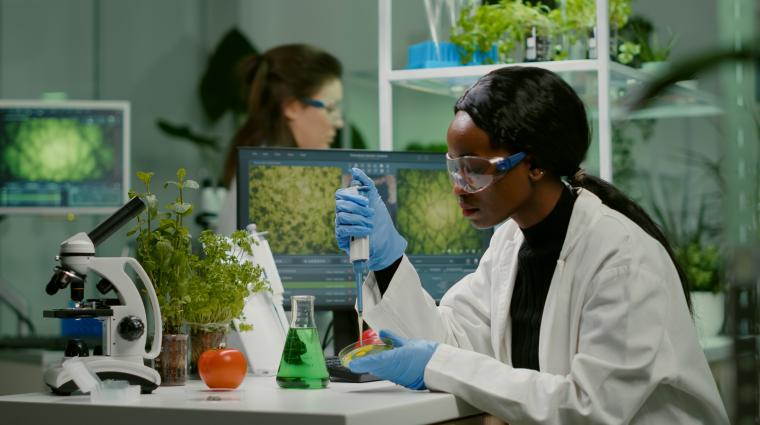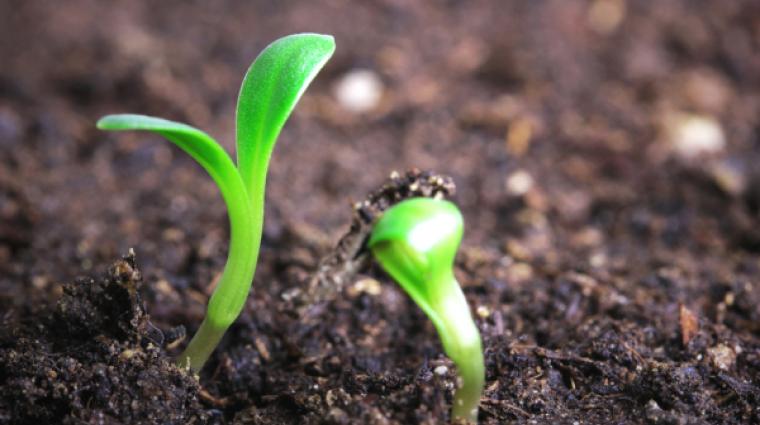FNR, SKIN
Please turn on 'captions' for the English translation.
„Ziel mir keng!“ - Sunday after 'Pisa Wëssensmagazin' on RTL Television. Watch all the episodes on RTL Play and/or our science.lu YouTube channel: https://www.youtube.com/user/scienceluxembourg
Yes, genetic engineering, genetically modified food, GMOs…
it all sounds a bit scary.
While genetic engineering in drug development is not controversial, genetic engineering in plants - i.e. green genetic engineering, which is the subject of this piece - very much is.
Those in favour say it is an important technology to feed 8 billion people.
Opponents argue that it is dangerous and not natural.
So, which is it?
The properties of a plant are determined by its genes,i.e. certain parts of its DNA. And we humans have been modifying the genes of plants for thousands of years. Through breeding, we try to make plants more nutritious, for example - or more resistant to diseases, pests, drought, or floods. Here on the left, for example, we see what maize originally looked like and here is a maize variety of today. Through breeding, we have modified a number of genes and, in effect, produced a whole new plant.
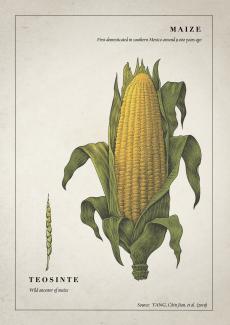
Crossbreeding is a classic process used in breeding. If we have, for instance, a maize that is nutritious but not resistant to a new disease, we cross it with a resistant maize variety. The desired result: a nutritious maize that is resistant.
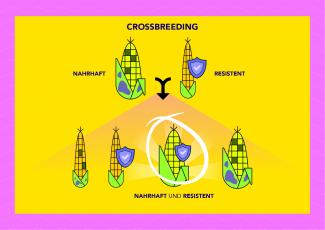
But it is wrong to believe that breeding is always entirely natural.There are a whole range of methods, and some of them are high-tech.
The thing is, you can only cross plants of the same species with each other - i.e. maize with maize and rice with rice.
But coming back to our example from before, what if there is no maize species that is resistant to the disease? In that case, you have to hope for mutations, i.e. spontaneous changes in the DNA. But that takes time! Unless we speed up the process a bit!
For instance with mutagenesis: Here, plants are treated with carcinogenic substances or radioactive radiation to trigger mutations. This process creates new genes at random, some with good characteristics, some with bad ones. The good plants are selected, the others eliminated.
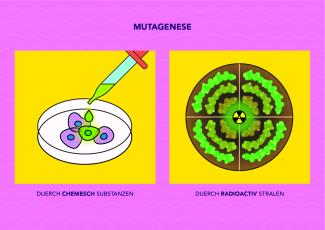
This process was classified as breeding for a long time.
And many of the foods we eat were created in this way. Genetic engineering is alsoa high-tech breeding method. This process allows you to specifically remove a certain gene from one plant and insert it into another.
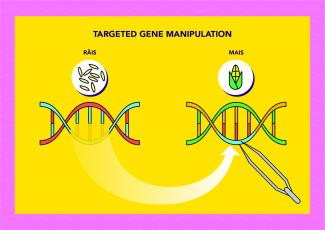
For this reason, genetic engineering opens up a lot more possibilities.
- Firstly, you don't have to hope for mutations,
- and secondly, you can insert genes from other plant species: for example, a rice gene into maize.
Since the Crispr-Cas method at the latest, genetic engineering has become incredibly precise. It is also more strictly regulated than breeding.
Interim conclusion
In plant breeding, genetic engineering is the process with the most possibilities, and the one that is most strictly regulated. But also the most controversial!
But why is that?
One counter-argument is that genetic engineering is not natural. That is correct, but as we have seen, breeding is not always entirely natural either.
Above all, opponents criticise the fact that genetic engineering allows genes to be exchanged at will between all kinds of species. For them, that is a step too far.
Another counter-argument: genetic engineering is allegedly harmful to our health. You can find a lot of information and studies on this topic, some of them contested by one side or the other.
Conclusion: So far there is no scientific evidence that genetically modified plants are harmful to humans.
Important to note in this context: Of course, foods that contain, for example, new types of protein, can be toxic or cause allergies. However, this can be the case with both traditional plant breeding and genetic engineering. That is also why plant species are tested before they come onto the market.
But there are also pro-arguments, for instance that genetic engineering leads to a decreased usage of pesticides and insecticides. That is true in theory.
If you do not make progress with breeding, you can use genetic engineering to create more resistant plants that need fewer pesticides. This has been achieved, for example, with an aubergine species in Bangladesh.
However, the situation is not so clear-cut when you look at commercial GMOs grown on a large scale, e.g. in the USA. Here, the use of pesticides or herbicides decreases in some cases and increases in others. The use of pesticides and herbicides also changes over time because resistances emerge and more herbicides or pesticides are needed again.
And then there is the argument that genetic engineering is an important means to fight world hunger. This is also true in theory. On the one hand, we have to feed more and more people,and on the other hand, we have less and less space available. And this is where genetic engineering could help. Especially in regions where people suffer from hunger,resistant plants are often needed.
But what is also true:
So far most of the GMOs on the market hardly deliver on this promise. Developing them costs a lot of money. For this reason, large corporations develop them for large markets where there is a lot of money to be made, sometimes also using dubious economic models in which farmers are exploited. GMOs have so far rarely been used where world hunger needs to be fought.
A counter-example in this context is golden rice, which was developed by publicly funded research institutes and contains vitamin A to combat vitamin A deficiency in countries like India or Bangladesh.
Final conclusion
Genetic engineering is one of many breeding methods.There are some that are considered low-risk and more technological ones that are considered higher-risk, such as genetic engineering.
Although the debate is black and white, the reality is actually grey. Genetic engineering does indeed have great potential. But because acceptance is not great, especially in Europe, it is unclear whether it will be able to fulfil its potential.
Perhaps in the future we need to move away from black-and-white thinking towards a case-by-case analysis with sustainability criteria:
Depending on the problem and the region, what is the best way to develop plant species in such a way that as few pesticides, insecticides, or synthetic fertilisers as possible are used, all while applying morally correct, economic practices?
If possible with breeding, if necessary with genetic engineering?
Author: Jean-Paul Bertemes (FNR)
Editor: Michèle Weber, Lucie Zeches (FNR)
Video: FNR & SKIN

